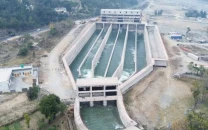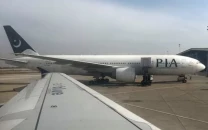Pakistan, Afghanistan and Pakistani Taliban
Geostrategically, no insurgency can survive without external havens and support

The Pakistani military authorities under the Peshawar Corps and Foreign Office have been in talks in Kabul with Tehreek-e-Taliban Pakistan (TTP) through a 57-member representative Jirga of Wazir, Mehsud and other tribes since first the week of June 2022. As a confidence-building measure, both sides have agreed to extend indefinitely the already announced ceasefire.
This round of talks is also facilitated and mediated by Sirajuddin Haqqani, the chief of Haqqani network and acting Interior Miniter of the Islamic Emirate of Afghanistan (IEA), besides IEA’s intelligence, interior ministry and tribal affairs officials.
The EIA is under immense pressure from Pakistan, its supporter and interlocutor, to deal firmly with TTP, whose cross-border attacks on security forces in April alone caused over 120 deaths. Earlier, IEA had shifted TTP fighters to concentrate in Kunar Province (Afghanistan) for better supervision, as disarming the TTP, suggested naïvely by some in Pakistan, is over ask. IEA is divided on strategy dealing with TTP because: a) TTP enjoys support within IEA for partnering during its jihad against the US/NATO forces; b) some conservatives within IEA consider attack on TTP un-Islamic; c) IEA simply doesn’t have the capability to deal with sizeable number of TTP fighters present on Afghan soil; and, d) IEA remains wary of an alliance between an irked TTP and IS-K/or Dai’sh.
Pakistan’s growing impatience with the TTP was demonstrated by its cross-border aerial strikes on 16 April this year. Settling the TTP issue, IEA feels, is basic for its recognition or otherwise by Pakistan/others. Mindful of this important leverage, a pragmatic IEA would want to address this legacy problem. IEA would also want to extend its writ throughout Afghanistan including TTP stronghold in the east; hence IEA’s efforts to make the talks successful “at any costs”.
A grand jirga in South Waziristan district formed a 35-member representative committee on 7 May to spearhead the parleys, after Army gave “deadline to Mehsud tribe to evacuate the area” in order to resume operations. Other participating jirgas are from Malakand, Bajaur and Swat, etc. TTP side is represented by Qazi Muhammad Amir, Mufti Ghofran, Commander Zarar, Omar Khalid Khorasani, Moulvi Faqir Mohammad, Dr Hamood, Mufti Abu Huraira, Hilal Ghazi and Moulvi Asif whereas the government is represented by senior/ranking military and intelligence officials.
As per press reports, one of the TTP demands is to roll back the erstwhile FATA’s merger with KPK (25th Constitutional Amendment) that created the newly-merged districts (NMDs) bearing former agency-names. TTP seeks to re-enact the agreement between Quaid-i-Azam Muhammad Ali Jinnah and tribal elders that guaranteed autonomy to the former FATA. The Supreme Court in 2020 admitted a petition filed against the 25th Constitutional Amendment and issued notices to the government (Federal and KPK) and former FATA lawmakers. That case remains pending.
Other TTP demands include prisoner release; presidential pardon for two key militant commanders, including TTP Swat spokesman Muslim Khan; and compensation for damages to property and loss of life/limb consequent to Pakistan’s military operations. They also want safe passage, freedom of movement and permission to keep arms. TTP Malakand/Swat also demands implementation of Shariah Nizam-i-Adl in the Malakand Division.
Reportedly, various sub-committees are formed to assess damages besides monitoring progress of the talks. A three-member representative committee would smooth over nagging differences. A joint arbitration committee (Pakistani security forces, TTP and IEA) would record progress of ground implementation under instructions from a guidance committee, etc. Both sides, reportedly, agreed to a three-month implementation process.
In October last year, I wrote “Amnesty to Pakistani Taliban — birds and stones”. Some relevant recap is in order. One, the TTP carries a lot of blood on their hands. Their heinous attack on Army Public School in Peshawar on December 16, 2014, killing 150 people, of whom at least 134 were students, is still disturbingly fresh. So, one hopes our interlocutors use this also as quid pro quo to eschew concessions from TTP as is the norm in such cases, rather than extending blanket and unconditional amnesty.
Two, TTP was always in bed with Afghan intelligence agency (NDS) and Indian RAW, along with their patronage by the CIA.
Three, IEA needs to fulfil its repeated commitment not to “let any group or individual use the Afghan soil for actions against any other country or entity”.
Four, IEA does not need a negative leverage of using TTP against Pakistan (at some time), given their immediate, short and long-term interests with and through Pakistan.
Five, TTP is under ba’at (allegiance) to IEA leadership. So, Noorwali Mehsud (TTP Ameer since 2018) would not be able to defy any decree by Ameerul Momineen, Mullah Haibatullah Akhundzada, ordering cessation of hostilities against Pakistan from Afghan soil.
Geostrategically, no insurgency can survive without external havens and support; and with IEA in power, the Afghan swamp is drying up and becoming more inhospitable for TTP. Pakistan-TTP rapprochement helps IEA consolidate its rule, as it reduces ungoverned Afghan spaces.
Internally, any shifting back of TTP would balance out the more secular, erratic and mostly anti-government Pashtun Tahaffuz Movement (PTM) in the NMDs and vice versa. Moreover, TTP, the myriad grouping of some 13 parties having different ideologies and different levels of motivations, is prone to internal fissures, combat fatigue, loss of morale and social pressure.
Our interlocutors need to deliberate in good measure regarding the re-integration of armed TTP militants back into Pakistani civil life. This entails future good conduct guaranteed by the tribe/quom/family etc, depending upon where the cadre comes from. With FATA dissolved and FCR (Frontier Crimes Regulations) no longer operative, this would be tricky, if not impossible. Some measure of coercion would and should be at the state/tribes’ disposal to deal with ‘black’ militants.
TTP is used to over-ask. It be offered no concessions for non-allegiance to Pakistan’s Constitution. TTP should know NMDs’ reversion back to FATA is mandated by Parliament. It also needs to surrender arms and shun all ties with other armed groups. However, after due cognizance/deliberations, the government can and should withdraw forces from erstwhile FATA, as TTP demands, entrusting all checkpoints to Frontier Corps (FC) and Frontier Constabulary, like in the past.
Our negotiators need to hold nerve and understand without any doubt that the tide is in Pakistan’s favour. Hence undue haste, credit-taking and unnecessary concessions be avoided, even if negotiations are drawn out.
Published in The Express Tribune, June 9th, 2022.
Like Opinion & Editorial on Facebook, follow @ETOpEd on Twitter to receive all updates on all our daily pieces.













COMMENTS
Comments are moderated and generally will be posted if they are on-topic and not abusive.
For more information, please see our Comments FAQ